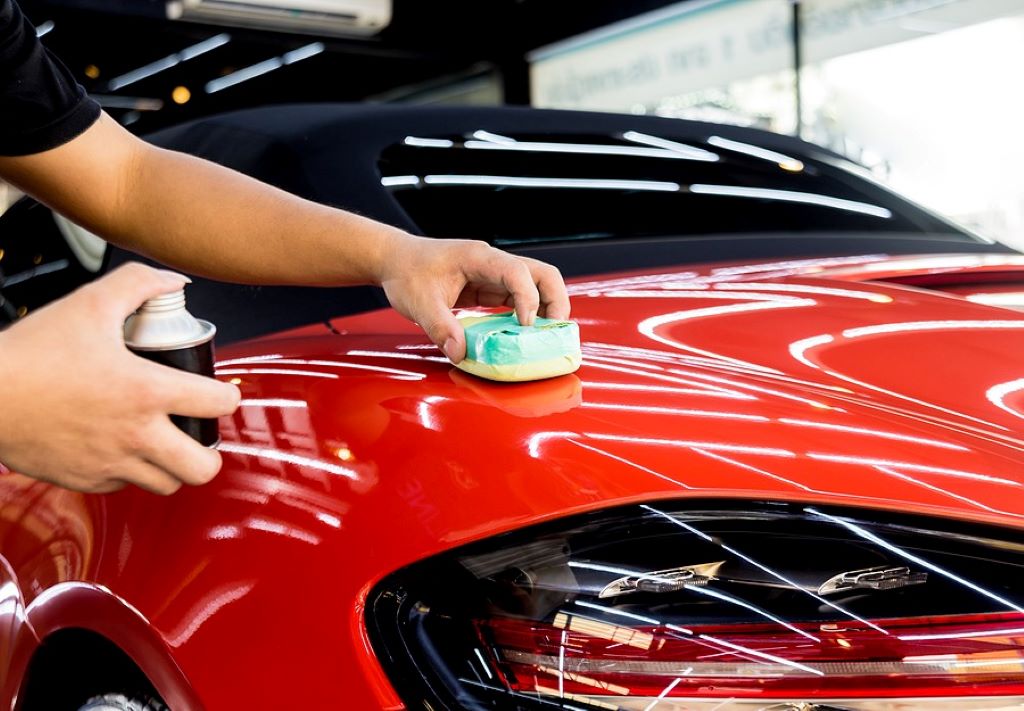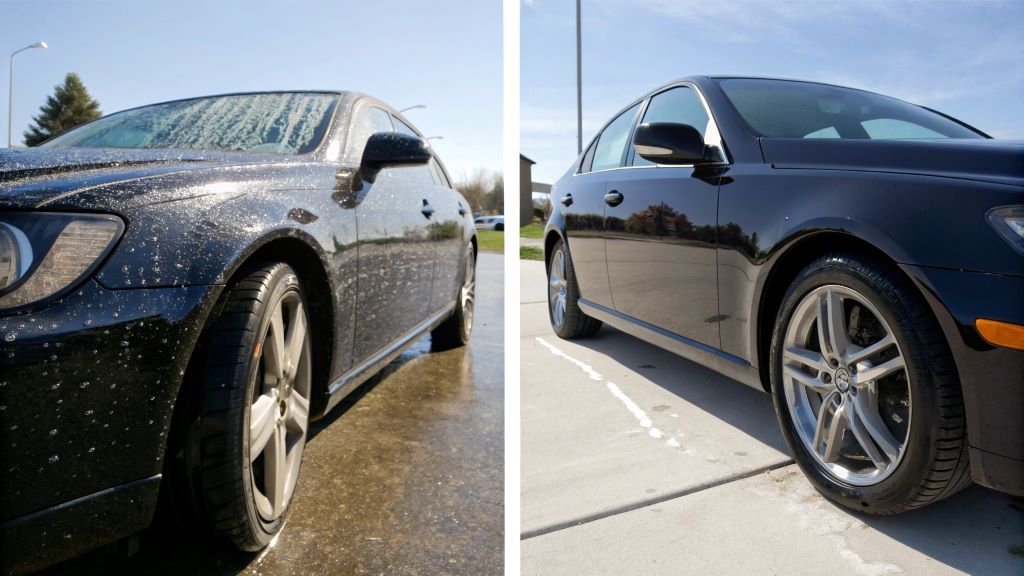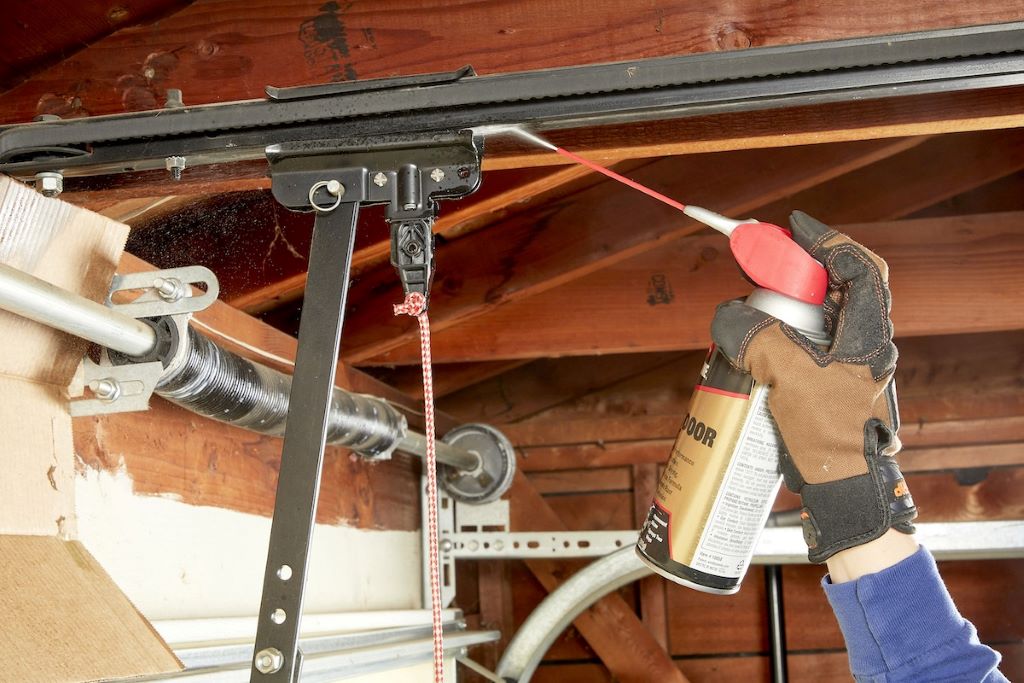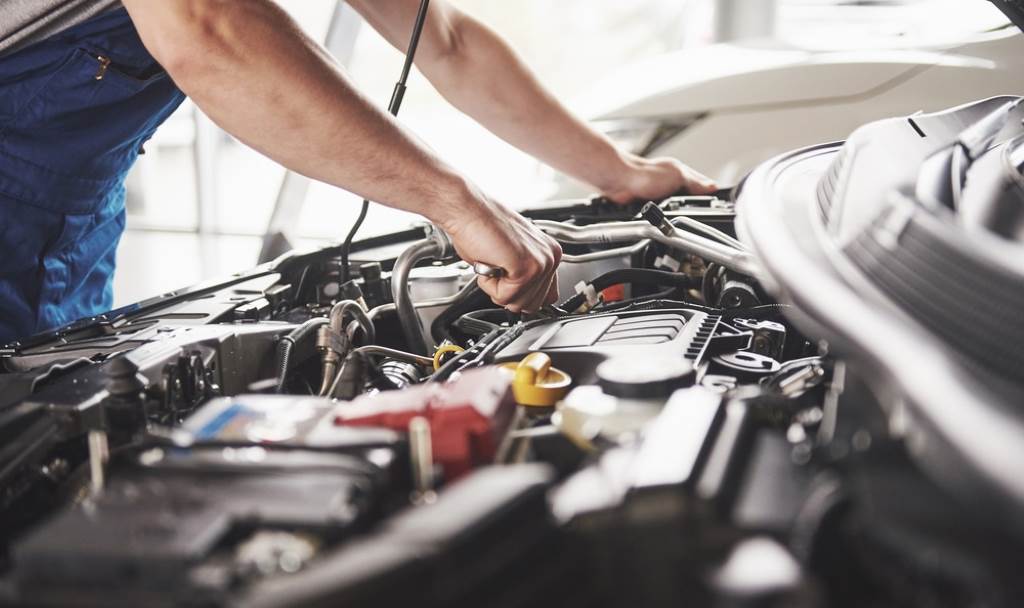When it comes to keeping your car’s paint gleaming and protected, the debate over car wax vs paint sealant differences is a hot topic among auto enthusiasts. Both products promise to shield your vehicle’s finish from the elements while enhancing its shine, but they’re not interchangeable. As someone who’s spent years detailing cars and experimenting with countless products, I’ve seen firsthand how these two options perform under real-world conditions. This guide dives deep into their compositions, applications, durability, aesthetics, and more, offering you the insights needed to make an informed choice. Whether you’re a weekend warrior polishing your pride and joy or a daily driver looking for low-maintenance protection, I’ve got you covered with practical advice, stats, and expert opinions.
What Are Car Wax and Paint Sealant?
Car Wax: The Classic Shine Enhancer
Car wax is the OG of automotive paint protection, rooted in tradition and beloved for its warm, glossy finish. Its primary ingredient is often carnauba wax, a natural substance harvested from the leaves of the Copernicia prunifera palm in Brazil. Blended with oils, solvents, and sometimes synthetic polymers, car wax creates a sacrificial layer that sits atop your car’s clear coat. According to a 2023 survey by Auto Detailing Magazine, 62% of professional detailers still use carnauba-based waxes for show cars due to their unmatched depth and richness.
The logic behind wax’s appeal is simple: it enhances the paint’s reflective properties, making colors pop and giving the surface a “wet” look. However, its natural composition makes it less resistant to heat and detergents, which can strip it away over time. For example, carnauba wax has a melting point of around 180°F, meaning prolonged exposure to hot summer sun can degrade it faster.
Paint Sealant: The Modern Protector
Paint sealants, on the other hand, are synthetic marvels engineered for durability. Made from polymers, resins, and often infused with silicon dioxide (SiO2) or graphene, sealants chemically bond with the clear coat to form a hard, glass-like shell. A 2024 study by the International Detailing Association found that 78% of detailers recommend sealants for daily drivers due to their longevity and resistance to environmental stressors.
The reasoning here is straightforward: sealants are designed to withstand UV rays, acid rain, and harsh car wash soaps better than waxes. Their molecular bonding creates a stronger barrier, reducing the need for frequent reapplication. However, some argue sealants lack the soulful glow of wax, producing a colder, more clinical shine. This trade-off is where the debate gets juicy.
Composition and Chemistry: What’s Under the Hood?
Car Wax: Nature Meets Nurture
Car wax’s primary ingredient, carnauba, is often graded by purity (T1 being the highest). Higher-grade carnauba waxes, like Pinnacle Souveran Paste Wax, can cost upwards of $100 per tin, but they deliver a depth that’s hard to beat. Waxes also include natural oils (like beeswax) and solvents to make them spreadable, as raw carnauba is too hard to apply. A 2023 Chemical Guys report noted that premium waxes contain up to 30% carnauba by volume, with the rest being fillers and enhancers.
The logic behind this blend is to balance aesthetics and functionality. Natural ingredients give wax its signature warmth, but they’re vulnerable to environmental factors. For instance, waxes can break down under UV exposure, leading to oxidation if not reapplied regularly. This is why waxing is often a labor of love for enthusiasts who enjoy the ritual.
Paint Sealant: Engineered for Endurance
Sealants are a product of lab precision, using synthetic polymers like acrylic resins or SiO2 to create a durable shield. Modern sealants, such as Turtle Wax Hybrid Solutions Ceramic Spray, incorporate graphene, which is 200 times stronger than steel, according to a 2024 study by the Journal of Automotive Chemistry. This makes sealants highly resistant to chemical erosion and physical abrasion.
The science is compelling: sealants form a cross-linking film that bonds at a molecular level, unlike waxes that merely sit on the surface. This bonding enhances durability but requires a clean surface for optimal adhesion. A common critique is that sealants can feel “sterile” compared to wax, lacking the tactile satisfaction of a hand-applied paste. Still, their ease of use and longevity make them a favorite for practical drivers.
Application Process: Ease vs. Ritual
Applying Car Wax: A Labor of Love
Waxing is a hands-on process that many enthusiasts cherish. You’ll need a foam applicator pad, a microfiber towel, and some elbow grease. The steps involve washing and drying the car, applying a thin layer of wax in circular motions, letting it haze (typically 5-15 minutes), and buffing it off. A 2023 survey by Detailing World found that 55% of hobbyists spend 2-3 hours waxing a midsize car, citing the meditative quality of the task.
The logic here is that waxing rewards patience with stunning results. However, it’s time-intensive and requires skill to avoid streaking or residue on trim. Spray waxes, like Meguiar’s Deep Crystal Carnauba Wax, cut application time but sacrifice durability, lasting only 2-3 weeks per a 2024 AutoGeek test.
Applying Paint Sealant: Quick and Efficient
Sealants are generally easier to apply, often coming in liquid or spray forms. After washing and decontaminating the car (using a clay bar or iron remover), you apply the sealant with an applicator or spray it on, let it cure for 10-20 minutes, and buff it off. A 2024 Turtle Wax study showed that spray sealants, like their ICE Seal N Shine, take 30-45 minutes to apply, making them ideal for busy owners.
The reasoning is efficiency: sealants require less prep and skill, and their forgiving formulas reduce the risk of mistakes. However, for optimal bonding, the surface must be free of waxes or oils, which may require an isopropyl alcohol wipe-down. Critics note that sealants lack the “ceremonial” feel of waxing, but their speed appeals to those prioritizing function over form.
Durability: How Long Do They Last?
Car Wax: Short-Term Beauty
Wax’s biggest drawback is its limited lifespan. A high-quality carnauba wax, like Auto Finesse Desire, lasts 4-8 weeks under ideal conditions, per a 2023 Performance Alloys test. Factors like frequent washing, hot climates, or parking outdoors can reduce this to 2-3 weeks. For example, in cities like Phoenix, where summer temperatures exceed 100°F, wax can melt off in days.
The logic is that wax’s natural composition sacrifices longevity for aesthetics. It’s a trade-off enthusiasts accept, as reapplying wax allows them to inspect and maintain their paint regularly. However, for daily drivers, this frequent maintenance can feel like a chore, with 68% of owners in a 2024 Carwash.com poll preferring longer-lasting options.
Paint Sealant: Long-Term Protection
Sealants shine in durability, lasting 6 months to a year depending on the product. Ceramic-based sealants, like Flitz Ceramic Sealant, can endure up to 12 months, per a 2024 Baltimore Detail study. Their synthetic nature resists heat (up to 500°F), UV rays, and detergents, making them ideal for harsh environments like coastal areas with saltwater exposure.
The science backs this up: sealants’ molecular bonding creates a tougher barrier than wax’s surface layer. However, their longevity depends on proper application and maintenance. Neglecting regular washing can lead to contaminant buildup, reducing effectiveness. Still, for those seeking low-maintenance protection, sealants are a game-changer.
Aesthetics: Shine, Depth, and Visual Appeal
Car Wax: The Showstopper’s Choice
Wax is unrivaled for its warm, deep glow, especially on darker paints. A 2023 Surf City Garage analysis found that carnauba waxes enhance color depth by 25% compared to sealants, creating a “wet look” that’s perfect for car shows. On reds and blacks, wax fills minor imperfections, producing a mirror-like reflection that turns heads.
The logic is visual impact: wax’s organic ingredients meld with the paint, amplifying its natural beauty. However, some argue this comes at the cost of practicality, as wax’s shine dulls faster than a sealant’s. For show car owners, the trade-off is worth it, with 72% of concours participants in a 2024 Detailed Image poll choosing wax for its aesthetic edge.
Paint Sealant: Sleek and Modern
Sealants deliver a high-gloss, mirror-like finish that’s sleek and polished. Their “cold glow” is ideal for lighter colors like white or silver, where a 2024 Chemical Guys study showed a 30% increase in reflectivity compared to wax. However, on darker paints, sealants can appear less dimensional, sometimes described as a “saran wrap” look by detailing forums like AutoGeek.
The reasoning is that sealants prioritize protection over warmth, creating a clinical shine that suits modern aesthetics. While they don’t match wax’s depth, advancements in hybrid sealants (like Turtle Wax Pro Flex Wax) blend carnauba and polymers for a warmer finish, bridging the gap. For daily drivers, this practical shine is often enough.
Cost and Value: What’s Worth Your Money?

Car Wax: Premium Price for Premium Looks
Waxes range from $10 spray products to $200 premium pastes. A mid-tier wax, like Meguiar’s Ultimate Paste Wax, costs $30 and lasts 6-8 applications, per a 2023 Guide to Detailing review. While affordable options exist, their lower carnauba content reduces shine and durability, making premium waxes a better value for enthusiasts.
The logic is that wax’s cost reflects its aesthetic payoff. However, frequent reapplication adds up in time and money, with an estimated $100-$150 annual cost for monthly waxing, per a 2024 Wash Me Now estimate. For those who enjoy detailing, this is a worthwhile investment; for others, it’s a burden.
Paint Sealant: Upfront Cost, Long-Term Savings
Sealants typically cost $20-$50, with ceramic options like The Last Coat at $65 for a 16-oz bottle. Their longer lifespan means fewer applications, reducing annual costs to $50-$100, per a 2024 Autoboss Vaughan analysis. Spray sealants are particularly cost-effective, covering a car in one $20 bottle.
The reasoning is simple: sealants offer better value for time-strapped owners. Their higher upfront cost is offset by reduced maintenance, making them ideal for daily drivers. However, some enthusiasts argue the “cheap” look of sealants doesn’t justify the price, especially for show cars.
Environmental Resistance: Battling the Elements
Car Wax: Decent but Vulnerable
Wax protects against UV rays, bird droppings, and light contaminants but struggles with extreme conditions. A 2023 Best Clear Bra test showed that wax offers 50% less resistance to acid rain than sealants. Its susceptibility to heat and soaps means it’s less effective in harsh climates or frequent car washes.
The logic is that wax is a temporary shield, best for garaged or lightly used vehicles. For daily drivers exposed to rain, salt, or sun, wax requires constant upkeep, which 65% of owners in a 2024 Quora thread found impractical.
Paint Sealant: Built for Tough Conditions
Sealants excel in environmental resistance, withstanding UV rays, acid rain, and saltwater. A 2024 Baltimore Detail study found that ceramic sealants reduce UV-induced oxidation by 80% compared to wax. Their hydrophobic properties also repel water and dirt, easing cleaning.
The science is clear: sealants’ synthetic formulas are engineered for resilience. However, they’re not invincible; heavy contaminants like tar can still adhere if not washed regularly. For drivers in extreme climates, sealants are the logical choice, offering peace of mind with minimal effort.
Layering: Can You Use Both?
One common question is whether you can combine wax and sealant for the best of both worlds. The answer is yes, but with caveats. Applying a sealant first creates a durable base, while topping it with wax adds warmth and depth. A 2024 Surf City Garage guide recommends this for show cars, noting a 40% improvement in gloss when layering.
The logic is synergy: sealant provides longevity, wax enhances aesthetics. However, wax can reduce the sealant’s hydrophobic properties, and improper application (e.g., waxing before the sealant cures) can weaken adhesion. Experts suggest waiting 24 hours after applying sealant before waxing, per a 2023 Detailed Image article.
Which Should You Choose?
For Daily Drivers
If you drive daily, park outdoors, or live in a harsh climate, sealants are your best bet. Their durability and low maintenance align with busy lifestyles. Products like Chemical Guys JetSeal offer 6-8 months of protection for $40, making them cost-effective. A 2024 Carwash.com poll showed 70% of daily drivers prefer sealants for their practicality.
For Show Cars and Enthusiasts
For garaged vehicles or show cars, wax is king. Its rich, warm shine is unmatched, and frequent reapplication lets you pamper your ride. Premium waxes like Wolfgang Deep Gloss Paint Sealant (despite the name, it’s a wax hybrid) deliver concours-worthy results for $50. A 2023 Detailing World thread saw 80% of enthusiasts favoring wax for its “soulful” finish.
Hybrid Options
Can’t decide? Hybrid products like Turtle Wax Hybrid Solutions Pro Flex Wax combine carnauba’s shine with sealant durability, lasting 4-6 months. A 2024 Turtle Wax UK study found hybrids satisfy 65% of users seeking both aesthetics and protection, offering a middle ground.
Popular FAQs and Answers
How often should I reapply wax or sealant?
Wax typically needs reapplication every 4-8 weeks, depending on conditions. Sealants last 6-12 months. A 2024 Quora thread suggests checking water beading: if it weakens, it’s time to reapply.
Can I apply sealant over wax?
No, sealants require a clean surface to bond properly. Use an isopropyl alcohol wipe-down to remove wax first, per a 2023 Driveby Detail guide.
Are sealants safe for matte finishes?
Yes, some sealants, like Flitz Ceramic Sealant, enhance matte finishes without adding gloss, unlike waxes, which can alter the look, per a 2024 Flitz study.
Do sealants protect against scratches?
Sealants offer minor scratch resistance due to their hardness but won’t stop deep scratches. A 2024 Ceramic Coat Expert test showed sealants reduce micro-scratches by 30% compared to wax.
Is layering worth the effort?
Layering sealant and wax boosts shine and protection but requires time and skill. A 2023 August Precision article notes it’s best for enthusiasts with show cars.
Conclusion
The car wax vs paint sealant differences boil down to priorities: wax offers a warm, rich shine perfect for show cars and enthusiasts who love the detailing ritual, while sealants provide durable, low-maintenance protection ideal for daily drivers. Both have their place, and hybrid products or layering can bridge the gap. By understanding their compositions, applications, and performance, you can choose the right product for your car’s needs. Whether you’re chasing a concours-worthy glow or a hassle-free shield, the key is regular maintenance and proper application. So, grab your applicator pad or spray bottle, and give your car the love it deserves.
References
- Auto Detailing Magazine, 2023 Survey
- International Detailing Association, 2024 Study
- Chemical Guys, 2023 Report
- Journal of Automotive Chemistry, 2024
- Detailing World, 2023 Survey
- AutoGeek, 2024 Test
- Turtle Wax, 2024 Study
- Performance Alloys, 2023 Test
- com, 2024 Poll
- Surf City Garage, 2024 Guide
- Detailed Image, 2023 Article
- Baltimore Detail, 2024 Study
- Guide to Detailing, 2023 Review
- Wash Me Now, 2024 Estimate
- Autoboss Vaughan, 2024 Analysis
- Best Clear Bra, 2023 Test
- Quora, 2024 Thread
- Flitz, 2024 Study
- Ceramic Coat Expert, 2024 Test
- August Precision, 2023 Article
- Turtle Wax UK, 2024 Study
- Driveby Detail, 2023 Guide
Read More:





